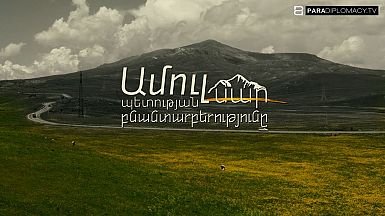Artashes and Hannibal
One of the fascinating eras in the history of the mankind is the era of antiquity and the appearance of the first states and peoples. Seemingly, Alexander the Great recently subdued the whole East, and now the satraps are unable to share his legacy.
One of the largest satrapies Seleucid state suffers a fatal defeat of the Romans and ceases to be a great power. Battle of Magnesia in 190 BC put an end to the reverie of Antiochus III for the world domination. And the Romans already had conquered Greece and a solid part of Southern Europe acquired the fame of murderous invaders and robbers. This is vividly seen on the background of the developed civilizations of the East. At the same time, Armenian rulers Artashes and Zareh, being under the rule of the Seleucids, declare their independence. Once again on the world map, the Armenian states appear. Great Armenia and Sophene were the first to declare independence.
According to the ancient Greek historian Strabo, Great Armenia grew rapidly due to the areas of Medes, Iberians, Syrians and other neighboring peoples. The ensuing wars enriched the state. Artashes seemed such a strong and independent sovereign that they began to turn to him for help in the fight against Rome advancing to the East. Artashes also understood that the war with Rome was inevitable, it was only a matter of time.
October 19, 202 BC. Carthage suffered a historic defeat, and the main enemy of the Romans, the great commander and strategist Hannibal fled to the East. He hoped to resume the struggle with the Romans and restore the former greatness to Carthage with the help of the Armenian king. The Armenian king received the guest with great honors. And Hannibal was surprised by the scale of construction throughout the country.
According to the Strabo, Artashes’s kingdom initially included Ararat plain and was traditionally called Ayrarat, as the Sumerians and Assyrians would call the Armenian state. The Sumerian poem “Enmerkar and the Lord of Aratta” was preserved, and the Assyrians called their northern neighbors Ararat. And Urartu is probably read in the cuneiform script, where only consonant letters are noted.
Giving the shelter to Hannibal, Artashes began the construction of his growing empire. Having vast experience in designing and planning, Hannibal became Artashes's assistant in the construction of the new luxury capital of Armenia. The capital of Armavir no longer suited the growing state. Artashat was to become the center of a new power, attracting with its beauty and luxury. The city was to exceed the scale of the largest cities of its time, such as Rome, Antioch, and others.
The place of the foundation of Artashat was chosen by the king in 166 BC. on the banks of the Araks River at the foot of Ararat, at the intersection of the most important trade routes of its time, including the Great Silk Road from China to Europe. This place still attracts archeologists and scientists from all over the world, as the city was very important. A few years ago, the news of the major findings in Artashat went around the world. Public baths, ritual facilities, temples, coins, household items, and beautiful mosaics of that time.
The ancient Greek philosopher Plutarch wrote that it was Hannibal who spotted a well-located area, and having made the graft for the future city, persuaded Artashes to build it there. The king was pleased and asked Hannibal to take over the construction. A big and very beautiful city was created.
It was because of Hannibal's participation that Artashat was called Armenian Carthage. African Carthage was completely destroyed by the Romans after the victory over Hannibal.
Subsequently, Artashes significantly strengthened and expanded his possessions, having subordinated to himself almost the entire Armenian Highlands, that is, all the regions where the Armenian-speaking population lived. Strabo notes that after the expansion of Armenia by Artashes, all the annexed lands became monolingual. This is a very important comment, as it emphasizes not the conquest, but the unification of the territories inhabited by Armenians from ancient times. As we know, the process of ethnogenesis, that is, the design of the people, takes many centuries and therefore Artashes could not populate huge territories by the Armenian population. And this is the reason for the success of Artashes, since the Armenians, living under the foreign yoke of the Achaemenids, united under the crown of a strong ruler with pleasure.
Having served for 29 years, Artashes I died, woefully remarking, “Alas, everything is perishable.”
After the death of Artashes I, a long period of wars between Armenia and the strengthened Parthian Power broke out, but one of the grandsons of Artashes Tigran II (the Great) was able to finish the work of his grandfather and conquer all the once great powers around Armenia, including the Seleucids and reach Egypt. However, the basis of this rise of the Armenian state was laid by Artashes I, which is still one of the most revered rulers of the ancient world.




